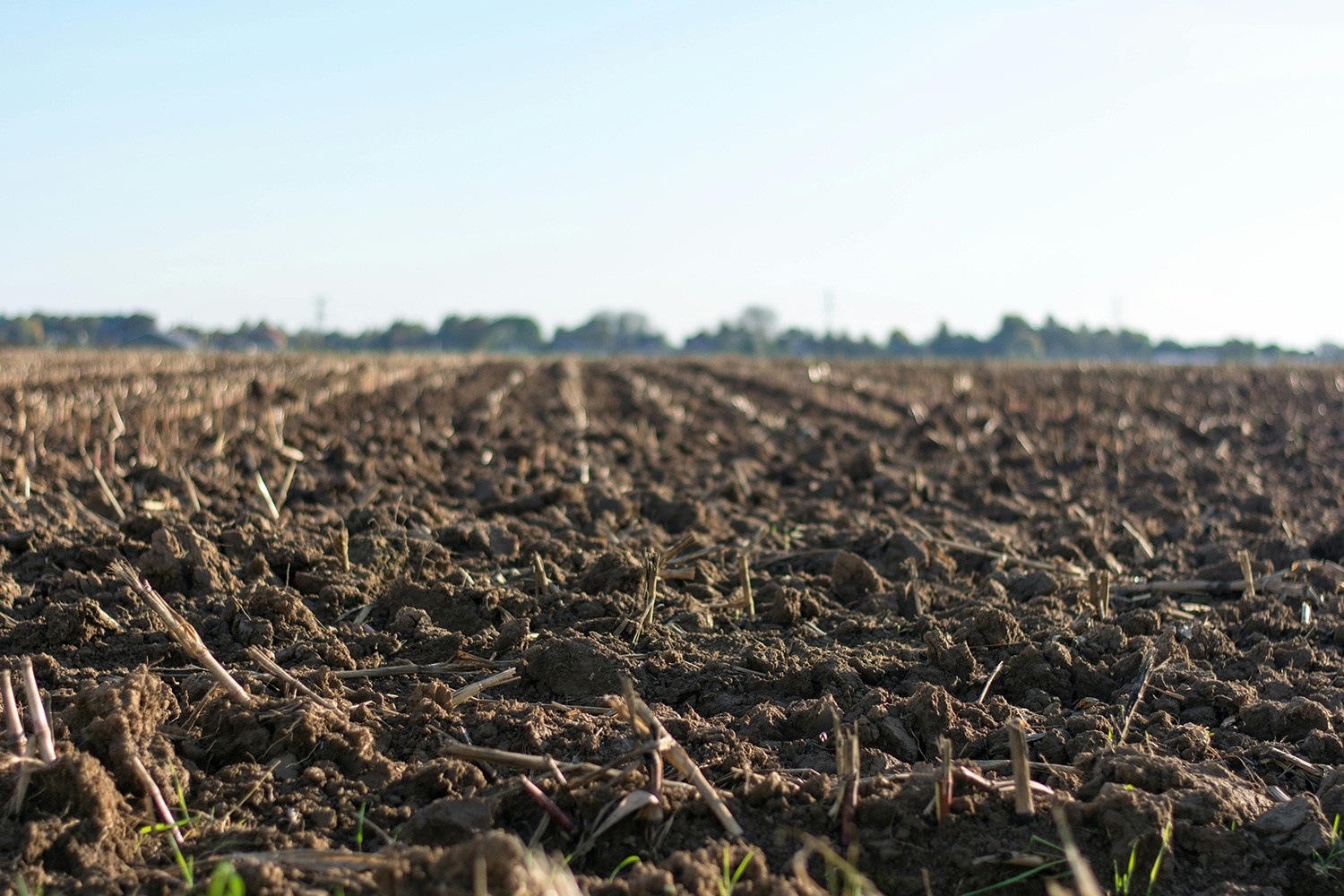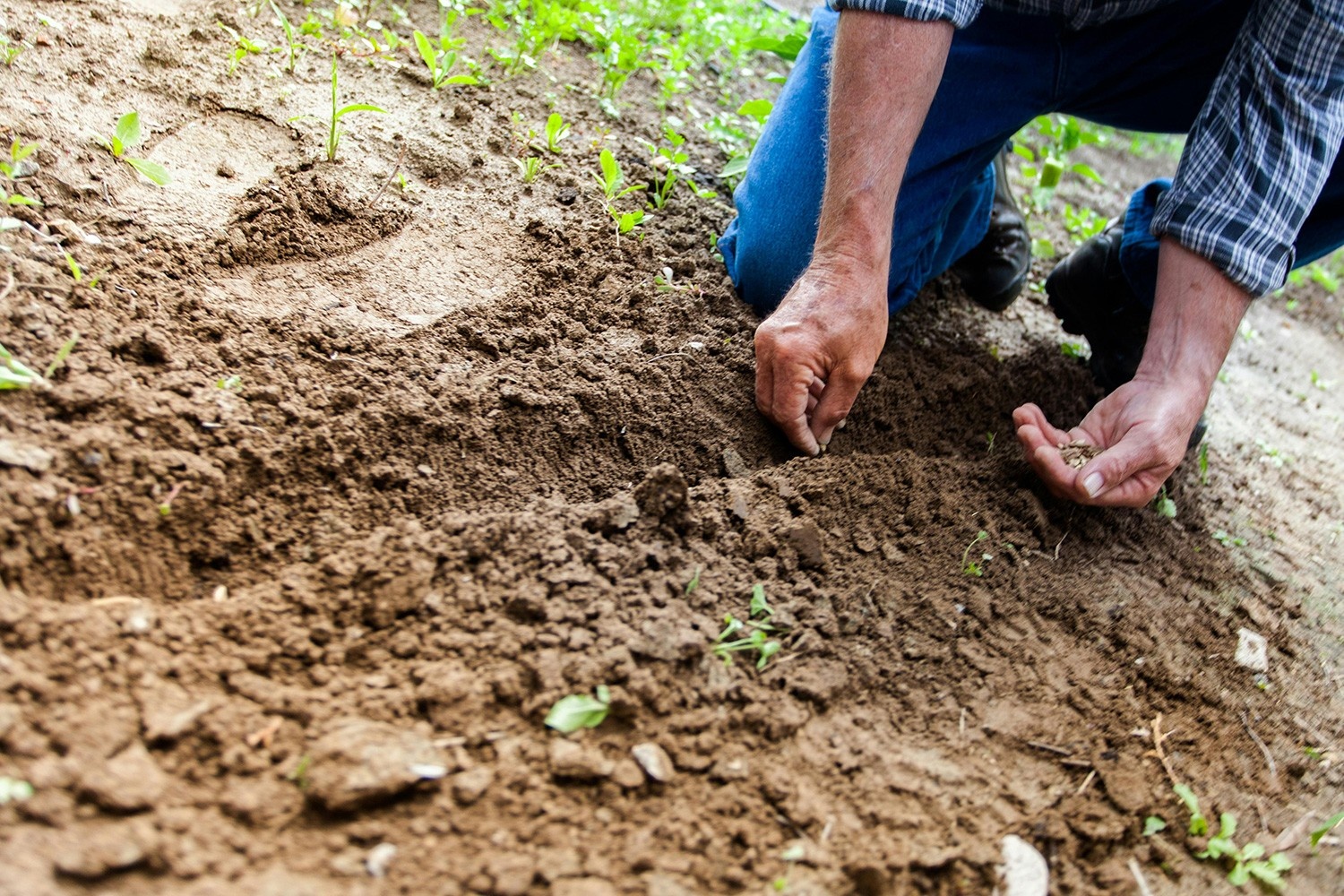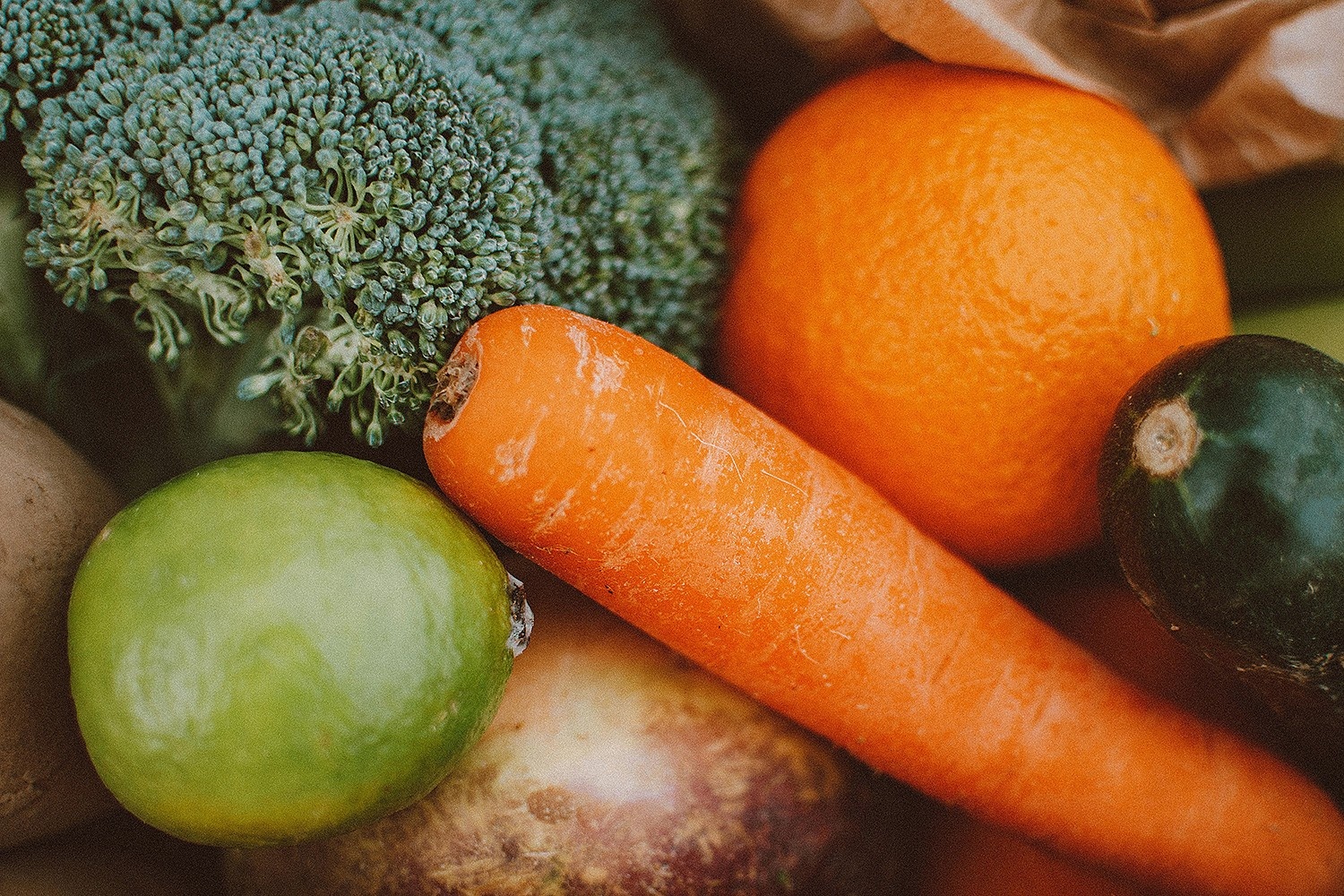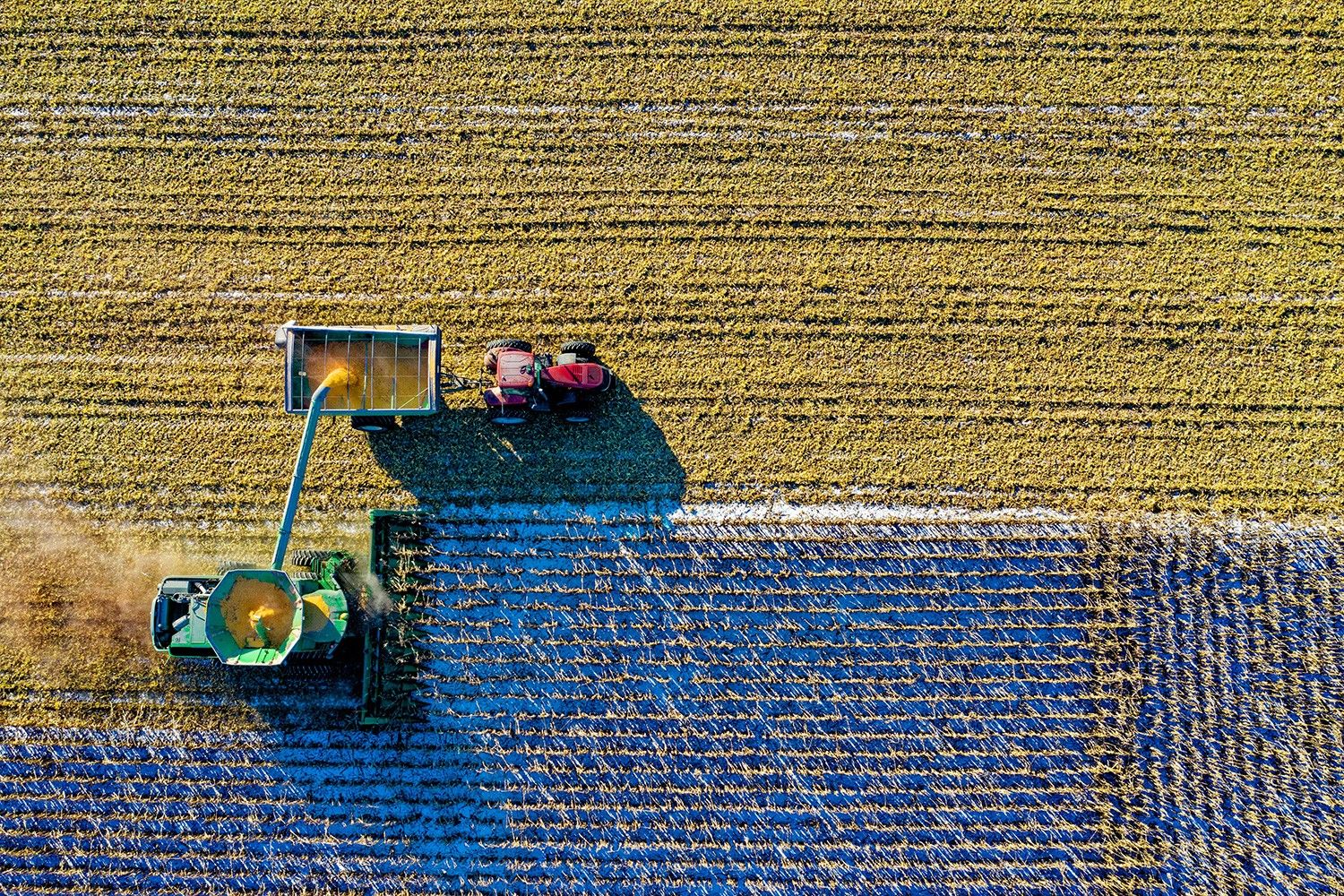NORTH STARS:
Production Consumption
Carbon Footprint
Waste Management
“The future of farming is in the past.”
Will an apple a day keep the doctor away in present-day America? Not today’s apple.
Walking through a grocery store, you’d see little evidence that American farms are struggling. Except for eggs, shelves are fully stocked with fruits and vegetables. Yet beneath this abundance lies a hidden cost: the food we consume today provides less nutrition than it did decades ago.
More Food, Less Nutrition
Over the past 50 years, the nutritional content of many fruits and vegetables has declined, with reductions in protein, calcium, phosphorus, iron, riboflavin (vitamin B2), and vitamin C. In 2024, an article in The Guardian highlighted that vegetables are losing their nutrients, with factors such as soil degradation, intensive farming practices, and climate change contributing to this decline. Once teeming with nutrients vital for healthy, abundant farming, global soils face a depletion crisis.
Large-scale agriculture practices in America bear some of the blame. The widespread reliance on synthetic fertilizers, monoculture farming, and intensive tilling has intensified the crisis.
“Agricultural practices commonly utilized to help accelerate the growth and size of crops are a contributory factor to these nutritional losses,” says Lena Bakovic, a registered dietitian with Top Nutrition Coaching.

Soil depletion is a complex issue with myriad causes. Courtesy of Pexels
But climate change also plays a role. According to a 2024 Penn State study, heavier rainfall caused by climate change is washing away vital minerals like phosphorus. Rising carbon dioxide levels are altering plant metabolism, leading to crops with higher carbohydrate content but lower essential micronutrient concentrations. This creates a double burden: not only are soils producing less nutritious food, but changing environmental conditions are compounding the problem.
Over two billion people worldwide suffer from deficiencies in essential micronutrients such as iron and zinc, which are crucial for immune function and cognitive development. But the consequences extend beyond human health, as soil degradation also disrupts the entire food chain.
“This depletion impacts not only plant-based foods but also the animals that feed on these plants, such as cows, sheep, turkeys, and chickens, creating a two-fold effect on the nutritional quality of our food supply,” says Bakovic.
A Deep-Rooted Problem: The Many Causes of Soil Depletion
Feeding a growing population while maintaining global food exports places immense pressure on American farmers. The push for ever-higher crop yields has led to an overreliance on synthetic fertilizers and pesticides, which degrade soil health over time. Glyphosate-based herbicides, such as Roundup, can persist in the soil for over a decade, disrupting microbial ecosystems that play a crucial role in nutrient cycling. In fact, this common weed killer is currently in the news this week as Robert F. Kennedy Jr., Trump’s Health and Human Services Secretary appointee, seeks to reduce environmental toxins that contribute to chronic disease.
Monoculture farming — repeatedly planting a single crop on the same land — contributes to the decline of soil fertility. Meanwhile, excessive tilling and deforestation accelerate soil erosion, stripping away the nutrient-rich topsoil essential for productive agriculture. Soil erosion contributed to The Dust Bowl during the 1930s, a severe environmental and economic crisis that devastated the Great Plains region. It would seem that humans never learn from past mistakes, as a plume of agricultural sediment recently enveloped Chicago, reigniting conversations around land management practices. The last storm in Chicago of such magnitude? The 1930s.
Soil acidification and soil salinization, caused by intensive fertilizer use, excessive irrigation, and rising temperatures, are other culprits.

Traditional farming practices offer an alternative path. Courtesy of Pexels
On top of manmade factors, there are also environmental ones, with climate change further exacerbating soil degradation. Rising temperatures accelerate the breakdown of organic matter, reducing soil carbon stocks. Extreme weather events, including heavier rainfall and prolonged droughts, lead to increased erosion and nutrient leaching. Soil health and climate change are deeply interconnected — degraded soils release stored carbon, contributing to greenhouse gas emissions, while shifting climate patterns make it harder to restore soil vitality.
The economic cost of soil degradation is staggering. According to research from the University of Colorado, soil erosion alone costs U.S. corn farmers approximately half a billion dollars in losses annually. The financial burden on farmers underscores the urgent need for policy shifts.
Seeding Change: A Path to Soil Regeneration
Large-scale agriculture is a major driver of soil depletion, but solutions may lie in farming’s roots. Around the world, alternative practices are restoring soil health by enhancing biodiversity, reducing reliance on synthetic inputs, and fostering more resilient ecosystems.
In Mexico, agroforestry – the practice of integrating trees and shrubs into farmland – has been used to restore former cattle pastures into agave fields. In Honduras, the Finca Humana or Human Farm approach developed by Elias Sanchez supports both the farmlands and farmers, integrating techniques like diversified planting, organic fertilization, and water conservation while also fostering mutual assistance within farming communities.
These methods have found their way to the States and other forms of agriculture, like viticulture. Dr. Nicholaus M. Madden, a soil scientist who studied Finca Humana during his time in the Peace Corps, now applies its principles at Vineyard Soil Technologies, where he advises wineries on sustainable soil management. “Implementing such practices requires a shift in mindset — a change of heart — beyond mere technical solutions,” says Madden. “The state of the farm is a reflection of the farmer.”

Due to soil depletion, today's fruits and vegetables aren't as nutritious as they once were. Courtesy of Pexels
Seeing the correlation between industrialized agriculture and soil nutrient depletion, Mark Neal, founder of Neal Family Vineyards (the first Napa Valley winery to become Regenerative Organic Certified), made it his mission to return to traditional methods.
“The future of farming is in the past,” says Neal. “By adopting sustainable farming practices, such as crop rotation, organic farming, reduced tillage, and the use of natural fertilizers, we can help restore soil health.”
“The system is orchestrating itself,” agrees Greg Pennyroyal, vineyard manager at California’s Wilson Creek Winery .“The more cover you have on the soil, the more solar energy those plants collect, the healthier those plants are.”
Farming for the Future
Reversing soil depletion requires action on multiple fronts. Farmers can adopt regenerative techniques, policymakers must provide incentives, and consumers can support sustainable agriculture — yet the high cost of organic food keeps it out of reach for many American households. Meanwhile, critical research on soil conservation faces political resistance, despite mounting evidence of its necessity.
History has already shown the consequences of inaction. The Dust Bowl devastated American farms, causing economic losses equivalent to tens of billions of dollars today. The cost of ignoring soil degradation again will be even greater — threatening food security, the economy, and the future of agriculture itself.

Carrie Dykes is a wine, food and travel journalist living in the Hudson Valley. Besides wine and travel, her hobbies are finding treasures in thrift stores and forest floors. Follow Carrie on IG @lilmarzipan.
North Stars: Carbon Footprint, Production & Consumption, Waste Management



